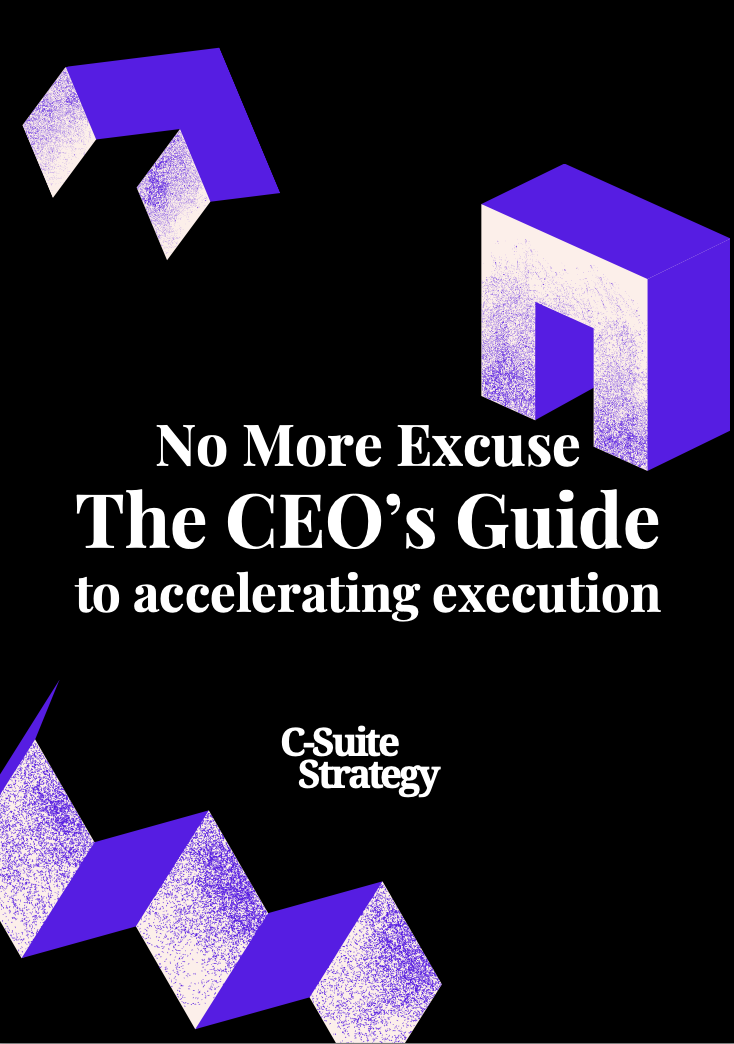
Defining the CXO: Beyond the Acronym
Navigating the Evolving Landscape of the CXO Role
In today's dynamic business environment, the role of the CXO is rapidly evolving, demanding a reimagined approach that goes beyond the traditional framework. While CXO commonly stands for Chief Experience Officer, it encompasses a breadth of strategic focus areas, engaging deeply with customer and employee experience management. The title of CXO now often serves as a canvas for various chief roles, each integral to shaping the overall organization’s success.
The scope of the CXO role transcends managing customer experience; it also includes initiatives that drive employee engagement and retention. The CXOs of today must integrate strategic thinking with an in-depth understanding of key business outcomes, utilizing rich data insights to optimize decision-making processes and elevate overall company performance.
As businesses become increasingly customer-centric, the CXO is pivotal in ensuring that the organization's strategic initiatives align closely with evolving consumer expectations and journeys. This alignment, however, isn't limited to the customer journey alone but extends to the employee experience, which is crucial for nurturing a productive work environment.
Moreover, CXOs are faced with the challenge of keeping pace with digital advancements and the digital transformation of customer service. To explore how premium touches can elevate customer service within this transformation, consider alongside the impact of premium customer service.
As we delve deeper into the tapestry of CXO responsibilities and collaborations with other executives, it's clear that the role is more vital and multifaceted than ever in steering the strategic direction of modern companies.
The Strategic Influence of the CXO
Influential Strategic Framework Established by CXOs
In today's business landscape, the role of the Chief Experience Officer (CXO) as a strategic influencer cannot be overstated. Companies increasingly recognize the importance of a customer-centric approach, with CXOs spearheading initiatives that enhance the customer experience and drive business outcomes.
As executive officers, CXOs hold a significant position in crafting and implementing strategies that align with both customer needs and organizational goals. They conduct a thorough analysis of customer data, looking into customer journeys, employee experiences, and leveraging employee management to improve customer loyalty.
Through strategic thinking, CXOs bridge the gap between marketing and customer service, ensuring that the business strategies devised are not only innovative but also practical and adaptable. Their CXO titles reflect a commitment to understanding and enhancing customer interactions across various touchpoints. CXOs work in tandem with other executive executives to refine operations, streamline communication channels, and invest in technology that supports effective contact center management.
The strategic acumen of CXOs is evident in how they foster an environment of collaboration within the organization. They encourage a culture where insights from different departments are harmonized, leading to unified strategies that position the company as a leader in its industry.
Key Responsibilities of a CXO
Core Responsibilities of a Chief Experience Officer
The role of the Chief Experience Officer is both vital and multifaceted in today’s dynamic business world. As a pivotal member of the executive team, the CXO is entrusted with the overarching task of shaping the customer and employee experience through strategic initiatives. Their job description often extends beyond traditional boundaries, requiring a nuanced understanding of cross-functional processes to meet the company's objectives. A primary responsibility of the CXO is to foster a customer-centric culture within the organization. By prioritizing the customer journey and enhancing customer experience, CXOs work to boost customer loyalty and drive positive business outcomes. This requires a deep dive into customer data and feedback, alongside direct engagement with contact center operations, to ensure every interaction aligns with the company’s brand promise. Moreover, a Chief Experience Officer must act as a bridge between different departments, leading cross-departmental efforts to align employee experience management with customer experience goals. In doing so, the CXO collaborates closely with marketing, HR, and other executives to ensure the company's strategies are effectively communicated and implemented across all levels. These responsibilities also encompass change management, where the CXO is responsible for guiding the organization through new initiatives and technological advancements. By spearheading innovation in experience management, they help companies stay competitive and responsive to the shifting needs of their consumer base. Finally, the Chief Experience Officer must embrace strategic thinking to continuously adapt and refine approaches that improve both customer and employee experiences. By overseeing these critical areas, CXOs play an essential role in executing the broader business strategies of the company. For more insights into the strategic influence within the C-suite, you might find "harnessing the power of a digital talent management influencer" an interesting read.CXO Collaboration with Other C-Suite Executives
Collaborative Synergy within the C-Suite
The role of the CXO in a company is evolving, necessitating a collaborative approach. Bridging gaps between different facets of an organization, the CXO brings together diverse skill sets and insights from other executive officers, such as the CEO, CFO, and CMO. This collaboration fosters a unified strategic vision that is crucial for achieving favorable business outcomes.
One key area where CXOs play a pivotal role is in experience management, encompassing both customer experience and employee experience. A chief experience officer ensures the smooth coordination across departments, with a focus on enhancing both the customer journey and internal processes. This necessitates close working relations with the Chief Marketing Officer (CMO) and the Chief Human Resources Officer (CHRO) to align marketing strategies and human resource initiatives with overall business objectives.
Furthermore, the integration of data-driven strategies into the decision-making process is an essential part of CXO responsibilities. Working alongside the Chief Data Officer (CDO) and Chief Technology Officer (CTO), the CXO can harness data insights to refine customer-centric initiatives and improve service delivery across the company, including touchpoints like the contact center.
Successful CXO collaboration does not only remain within the constraints of the c-suite but extends throughout the organization. Encouraging an understanding of the company’s strategic goals among all employees, CXOs promote a culture of collective responsibility towards achieving overarching goals. This interconnected network of strategic thinking helps in nurturing customer loyalty, enhancing customer engagement, and ensuring that the business remains competitive and nimble in the face of evolving market demands.














